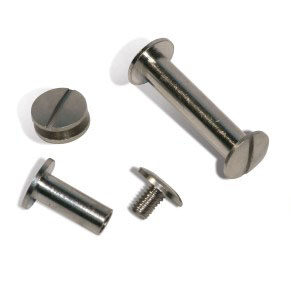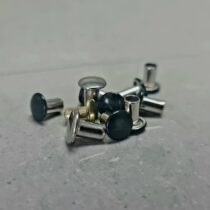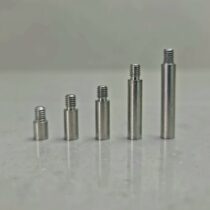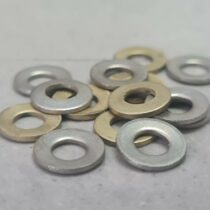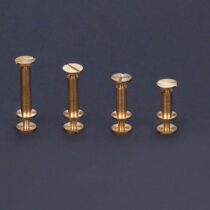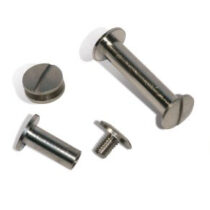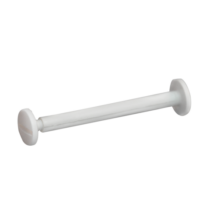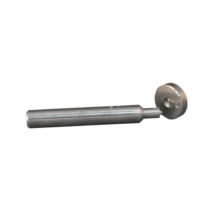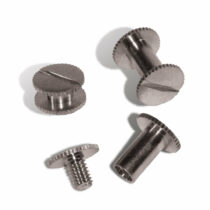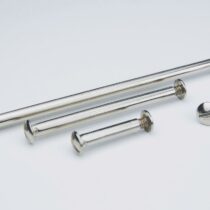Binding screws are also commonly known as Chicago screws, screw posts, or bookbinding screws. These versatile fasteners consist of a threaded post and a screw that can be easily assembled and disassembled. Binding screws are widely used in various applications, primarily in bookbinding, crafting, and document binding. Here are some key details about binding screws:
Common Names:
- Binding Screws: The term “binding screws” is commonly used, especially in the context of document and bookbinding.
- Chicago Screws: This name is derived from the Chicago brand, which popularized these types of fasteners. “Chicago screws” has become a widely accepted term.
- Screw Posts: The name “screw posts” refers to the threaded posts used in these fasteners.
- Interscrews: A self explanatory name for the way the screws fix into each other with a male and female screw side.
Characteristics and Uses:
- Composition:
- Interscrews typically consist of two main parts: a threaded post with a head and a screw. The threaded post is inserted through the materials to be bound, and the screw is tightened to secure them in place.
- Material:
- They are often made of metal, such as brass, aluminium, or steel, providing durability and a professional appearance.
- Assembly and Disassembly:
- Binding screws are designed for easy assembly and disassembly. This makes them suitable for applications where materials need to be periodically updated or replaced.
- Bookbinding:
- In bookbinding they are used to secure the covers and pages of a book. They allow for easy removal and replacement of pages without the need for traditional binding methods like stitching.
- Scrapbooking:
- Crafters and scrapbook enthusiasts use binding screws to create customizable scrapbooks. The screws enable the addition or rearrangement of pages without damaging the existing ones.
- Menus and Catalogues:
- Often employed in the creation of menus and catalogues, providing a neat and professional way to secure and update pages.
- Leather Goods:
- In leatherworking, screws are used to attach straps, buckles, or other components to leather goods, offering a secure and adjustable fastening solution.
- Swatch Books:
- Swatch books for fabric, paint, or other materials often use binding screws. This allows users to flip through the samples easily and replace them when needed.
- Sample Books and Presentations:
- Binding screws are used in sample books and presentations, providing a clean and organized way to showcase samples or information sheets.
- Photo Albums:
- Suitable for creating photo albums where users may want to add or rearrange pictures over time.
- Legal and Financial Documents:
- They are used in legal or financial documents where updates are required, and the ability to easily replace or add pages is essential.
Overall, these screws offer a practical and efficient way to bind materials without the need for permanent binding methods. They are valued for their flexibility, ease of use, and the ability to adapt to changing content.
 Binding Screws
Binding Screws








